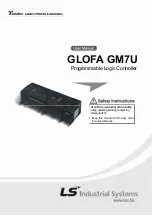DR
AFT
DR
AFT
DRAFT
DR
D
RAFT
DRAFT
DRA
FT DRAF
D
RAFT DRAFT DRAFT DRAFT DRAFT D
DRAFT
D
RAFT DRA
FT DRAFT DRAFT DRAFT DRA
UM10316_0
© NXP B.V. 2008. All rights reserved.
User manual
Rev. 00.06 — 17 December 2008
194 of 571
NXP Semiconductors
UM10316
Chapter 13: LPC29xx USB device
–
Set EOT, DDR, and ERR bits in USBDMAIntEn.
9. Install USB interrupt handler in the NVIC by writing its address to the appropriate
vector table location and enabling the USB interrupt in the NVIC.
10. Set default USB address to 0x0 and DEV_EN to 1 using the SIE Set Address
command. A bus reset will also cause this to happen.
11. Set CON bit to 1 to make CONNECT active using the SIE Set Device Status
command.
The configuration of the endpoints varies depending on the software application. By
default, all the endpoints are disabled except control endpoints EP0 and EP1. Additional
endpoints are enabled and configured by software after a SET_CONFIGURATION or
SET_INTERFACE device request is received from the host.
13. Slave mode operation
In Slave mode, the CPU transfers data between RAM and the endpoint buffer using the
Register Interface.
13.1 Interrupt generation
In slave mode, data packet transfer between RAM and an endpoint buffer can be initiated
in response to an endpoint interrupt. Endpoint interrupts are enabled using the
USBEpIntEn register, and are observable in the USBEpIntSt register.
All non-isochronous OUT endpoints generate an endpoint interrupt when they receive a
packet without an error. All non-isochronous IN endpoints generate an interrupt when a
packet is successfully transmitted, or when a NAK handshake is sent on the bus and the
interrupt on NAK feature is enabled.
For Isochronous endpoints, transfer of data is done when the FRAME interrupt (in
USBDevIntSt) occurs.
13.2 Data transfer for OUT endpoints
When the software wants to read the data from an endpoint buffer it should set the
RD_EN bit and program LOG_ENDPOINT with the desired endpoint number in the
USBCtrl register. The control logic will fetch the packet length to the USBRxPLen register,
and set the PKT_RDY bit (
).
Software can now start reading the data from the USBRxData register (
).
When the end of packet is reached, the RD_EN bit is cleared, and the RxENDPKT bit is
set in the USBDevSt register. Software now issues a Clear Buffer (refer to
command. The endpoint is now ready to accept the next packet. For OUT isochronous
endpoints, the next packet will be received irrespective of whether the buffer has been
cleared. Any data not read from the buffer before the end of the frame is lost. See
13–15 “Double buffered endpoint operation”
for more details.
If the software clears RD_EN before the entire packet is read, reading is terminated, and
the data remains in the endpoint’s buffer. When RD_EN is set again for this endpoint, the
data will be read from the beginning.


















